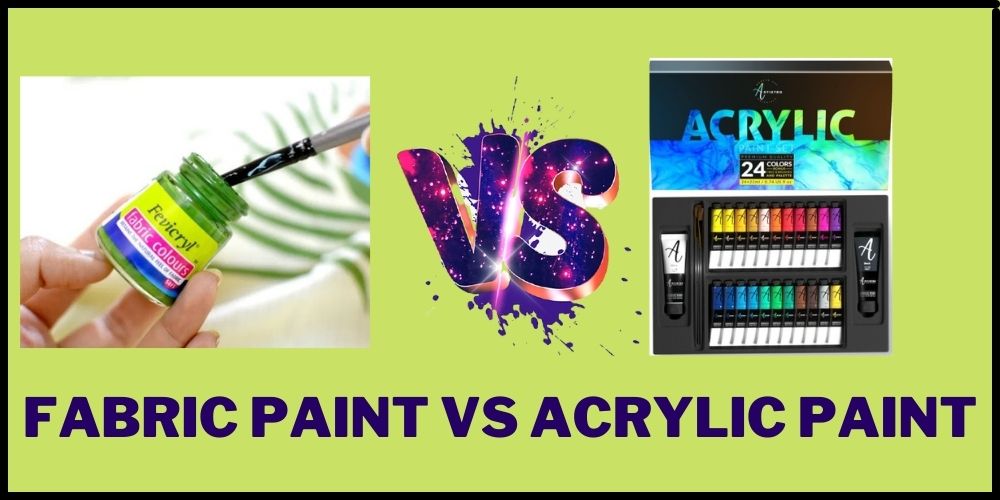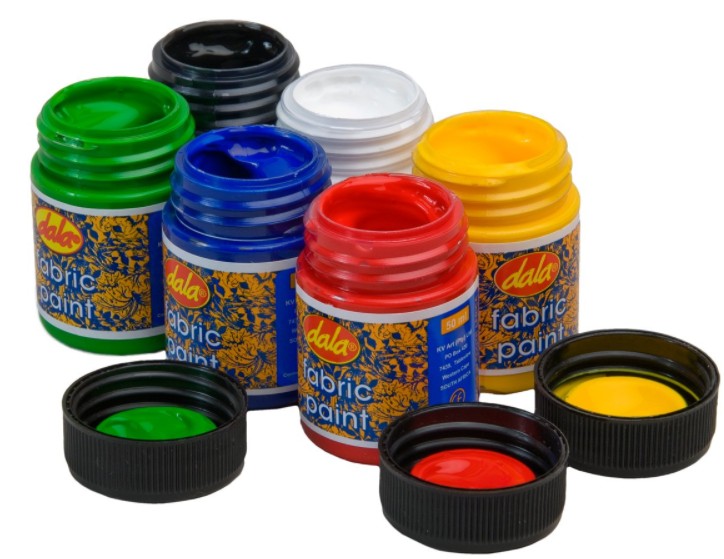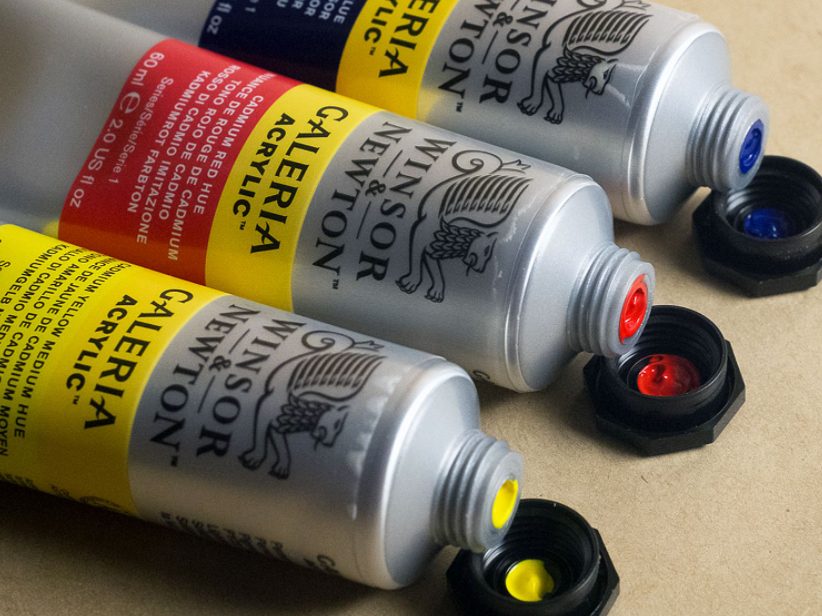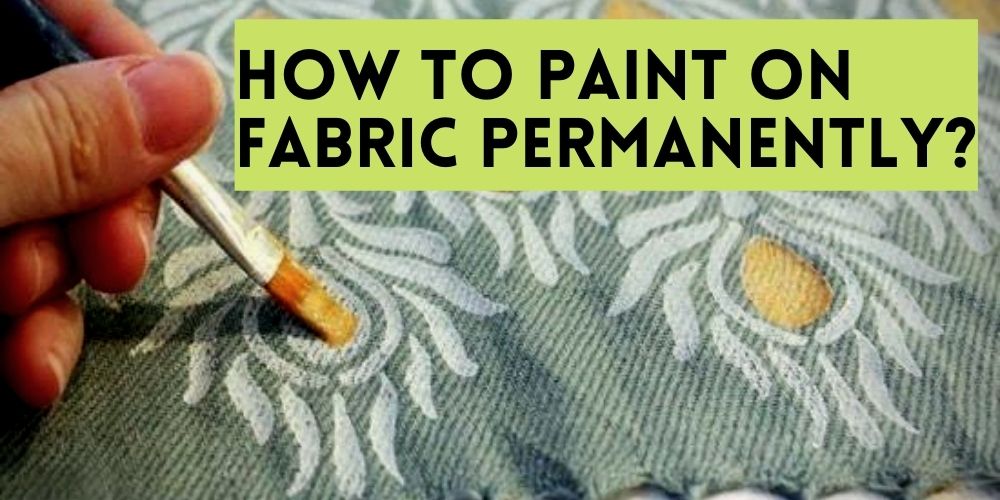Painting brings out the innovative talent hidden inside a human. At the same time, it is also one of the best ways to spend time with your loved ones. Nowadays, many parents spend quality time with their kids by creating art on fabric or t-shirts. When the concern is about letting your imagination flow on the material, you have to decide which type of paint will be perfect for the job.
Some artists like to go with fabric paint, while others prefer acrylic paint. Although selecting the color depends on personal preference yet, you have to learn the differences before finalizing your decision. In this blog, we have tried to pick a winner of this fabric paint vs acrylic paint debate.

So, today we will share our detailed research on fabric paint vs acrylic paint by picking out the major differences and similarities between duos.
What is Fabric Paint?

Fabric paint is one of the first choice paints for designers who want to customize their favorite T-shirts or any other fabric. It is widely used in textiles, upholstery, and other craft-based activities. As mentioned above, fabric paint uses specific ingredients, which makes it best when the concern is about binding.
Purpose of use:
Generally, fabric paint has special ingredients which makes it suitable to build artwork on textiles. You will have to keep in mind that fabric paint works best on damped (Wet) surfaces. Dyes can peel off quickly, but fabric paint has a special kind of binder, which provides longer life to the design.
Nevertheless, fabric paint is perfect for natural fabric, but it doesn’t bind well with synthetic fabrics. We can tell that the applications of fabric paint are not unrestricted when compared to acrylic paint. You have to also prepare the fabric before painting to ensure that it works well with fabric paint.
There are also various techniques that you can use on fabric paint. But you will have to also learn to be patient as artwork created on textile using fabric paint needs a lot of time to dry.
What is Acrylic Paint?

When compared to fabric paint, acrylic paint is fast-drying as it is made from a combination of pigments like plasticizers, silicon oils, defoamers, and acrylic polymer emulsion. Just as fabric paint, acrylic paint is water-based and becomes waterproof once it is dried.
One can also modify the appearance, hardness, texture, and other characteristics of acrylic paint using different types of acrylic mediums or just by simply adding water to acrylic paint.
Acrylic paints are also quite brighter and striking when compared to other watercolours and are also consistent with oil based paints.
Purpose of use:
In the late 1950s, water-based acrylic paints were used as the latest house paints because of their higher tendency of resisting water. As they are simple, one can use acrylic paint on various surfaces.
You can use acrylic paint on cardboard, metal, plastic, and even on fabric. Still, you will have to dilute with acrylic fabric medium or by simply adding water in accurate proportions. You can also use acrylic paint on wood, decorative crafts, silk, glass, canvas, paper, composite and ceramics.
Fabric Paint vs Acrylic Paint (All Major Differences)
Well, from the outside, you cannot pick out major differences between acrylic and fabric paint; hence you will have to go a bit deeper to pick out differences. You don’t have to be an expert to discover the differences, but being overwhelmed can also hit you hard.
Hence we have taken a closer look at fabric paint vs acrylic paint for those who would like to learn this topic better.
1) Use on Versatile Fabric:
We have already mentioned above that acrylic paint is more flexible or versatile when compared to fabric. One can use fabric paint only on natural textiles, while on the other hand, you use acrylic on various mediums.
Acrylic paint offers better binding on various platforms when compared to fabric paint. We have also mentioned various applications of acrylic, which you have must-read by now.
2) Stiffness:

As the name suggests, fabric paint is specifically designed to work well on textiles like t-shirt, scarves, hats, shirts, curtains, and pants. One of the prominent reasons you should use fabric paint on textiles is that it is soft to touch and easy to fold, making it appropriate for fabrics.
In comparison, acrylic paint becomes hard; hence it can become difficult to drape the cloth after applying acrylic paint on fabric. Well, you can use acrylic paint on a t-shirt, but acrylic paint fails to show its versatility on bed sheets, curtains, shirts, and hats.
3) Fabric Friendly Paint:
When the concern is about fabric-friendly paint, we can bet on fabric paint as it doesn’t peel off once dried compared to acrylic paint. First of all, it is quite difficult to apply acrylic paint on textile because of its thick consistency. Secondly, acrylic paint also leaves behind a chipped design on the fabric, just like it does on canvas and wood. You can make acrylic paint by adding medium or water, but fabric paint wins the show here.
4) Absorbance:
As mentioned above, acrylic paint is not fabric-friendly paint, but you can use it as a perfect alternate option for fabric paint. It stays on the top of the fabric’s surface, but the fabric does not absorb it. On the other hand, fabric paint is made from a combination of dye and insoluble agents to ensure that it is easily absorbed into the fabric. Fabric paints are quickly absorbed by the fabric, which means it doesn’t offer room for corrections.
5) Canvas Friendly Paint?
When the concern is about canvas-friendly painting, fabric paint is way behind acrylic paint due to its absorbing nature. Acrylic paints are perfect for canvas as they are prepared before painting to ensure that no paint can make it to the interiors. Fabric paints will easily fade away from the canvas; hence using them is not a great idea. On the other hand, acrylic paints are adhesive in nature; hence using those on canvas will ensure that you can leave them untouched for ages.
6) Ability to Dry:
When it comes to drying, both fabric and acrylic paint offer quick-drying; hence you don’t have to worry about drying. Fabric paint requires heating like iron, sunlight, or a hairdryer to ensure it doesn’t come off during the first time wash. There is no similar issue found in acrylic paint; hence you can use it without any doubt. One of the best advantages of using acrylic paint is it dries instantly when applied to the fabric.
7) Durability and Effect of Washing:
Fabric paint dresses tend to stay longer as designs made from fabric paint have longer progress. You can find colours going blur after a couple of years, but it is a considerable amount of time for a textile. Ultimately, fabric paint doesn’t get off easily despite numerous washes. Although there might be a small variation with colours, you will be pleased with no damage to the structure.

Most of the experts recommend going with dry cleaning if you have a fabric made from acrylic paint. At the same time, acrylic paint can chip off from the fabric’s surface even with a single wash. You have to be careful with textiles that have designs made from acrylic paint, as they can easily chip off with a single wash. It doesn’t mean they are a bad choice for fabric because fabric paints do not stick well on canvas, but acrylic paint dominates fabric paint due to its adhesive nature when it comes to canvases.
8) Long Lasting on Fabric Vs Canvas:
As acrylic paints are not good at water wash, they do incredibly well on canvases. The adhesive nature of acrylic paint makes it easy for them to hold on to canvas compared to fabric paint which requires textiles that can absorb them for grip. If you need a long-lasting canvas design without any doubt, acrylic paint must strike your mind first.
9) Use of Washing Machine:
Textiles and garments having designs made from fabric paint are perfect for both hand and machine washes if you have a premium quality detergent. Machine wash doesn’t damage the fabric paint even after multiple washing items, yet you can observe variations in colour and pattern changes over time.
10) Chances of correction:
If you are not good at the artwork, we would like to recommend you to go with fabric paint because it gives you a second chance to correct your mistakes. If you go somewhere wrong with fabric paint, you can wash the fabric immediately to get a second chance. Compared to fabric paint, acrylic paint quickly dries and solidifies on the fabric, which means your first stroke must be perfect here. If you don’t want to paint on fabric permanently, use fabric paint or a diluted acrylic paint version.
Frequently Asked Questions (FAQs)
Get your answers here.
1. Can I Paint on Fabric with Acrylics? How to soften acrylic paint on fabric?
Yes, you can paint on fabric with acrylic paint. To do so, you will have to reduce the thickness of the acrylic fabric by adding a fabric medium or water. Doing so will make the acrylic paint consistent which is perfect for fabrics.
2. Is Acrylic Paint Better Than Fabric Paint?
Both acrylic paint and fabric paint have their advantages and disadvantages, but acrylic paint is better for canvases and decorative crafts. On the other hand, when the concern is about textiles, nothing can match the superior quality of fabric paint.
Final verdict:
To sum up, fabric paint is perfect for making large designs like t-shirts, bedsheets, or curtains where you must provide room for changes. On the other hand, acrylic paint is brilliant for its brightness and is good for tiny yet effective designs. We hope the differences as mentioned above between fabric paint and acrylic paint were useful.


